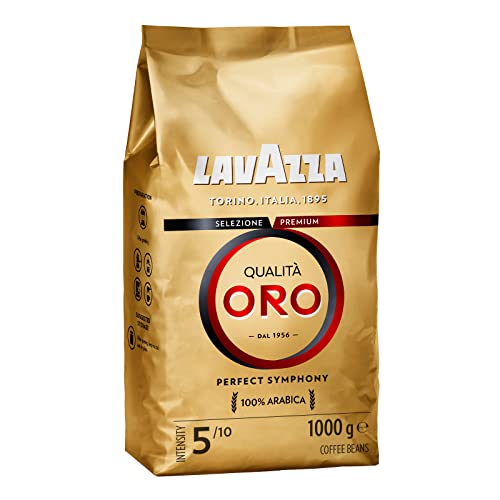10 Facts About Types Of Coffee Beans That Can Instantly Put You In An Upbeat Mood

Types of Coffee Beans
Behind every cup of coffee that we enjoy, are carefully graded bean. These beans are examined according to their size, color, shape and density.
The AA rating is given to coffee beans that fulfill the above criteria, with the exception that they cannot contain more than three defects (quakers). Typically these are Kenya AA beans.
Arabica
Arabica coffee beans are also referred to as Coffea Arabicica and are the most well-known coffee in the world. According to the legend, coffee was discovered by a goatherder in Ethiopia after he noticed that his animals had more energy when they consumed the fruits of the plant. This led him to experiment with roasting and making the seeds into the drink we know and love today.
While many types of coffee plants are available however, there are two major species used as the basis for our favorite beverages: robusta and arabica. The former is generally thought superior to the latter and this is reflected in the flavor of the final beverage.
There are many different arabica cultivars. Each one has distinct flavor profiles. Typica and Bourbon are two of the most sought-after arabica cultivars. All other arabica cultivars were developed from these two varieties, either through natural mutations or deliberate crossbreeding. The SL28 cultivar, for instance was developed in Kenya by Scott Labs and is known for its distinctive chocolatey flavour.
The flavor of a particular arabica variety is determined by the conditions under which it is grown, as well as the way it is treated and roasted. For instance, the type of shade a tree gets as well as its altitude and soil composition could all play an important part in the final flavor.
Robusta
Robusta coffee beans (Coffea canephora) are the second most sought-after variety of coffee beans. These beans are used in most instant coffees, and contain twice as much caffeine than Arabica Coffee Beans. They also are used to make many blends of espresso including cappuccino, caffe latte and other beverages that are coffee-based.
Coffea Canephora is an African plant that was first discovered in Sub-Saharan Africa. It has been grown all over the world since. It can grow at lower elevations and withstand higher temperatures than Arabica coffee plants, making it more convenient for farmers. Vietnam is the world's largest producer of robusta, followed by Brazil and Indonesia.
The robusta plant is a good coffee, but it's not a popular choice among cupping enthusiasts due to its bitter taste and burnt-rubber aroma. It is often considered an inferior coffee and a majority of the major coffee companies employ arabica beans for their premium products.
The demand for premium coffees is increasing, and small roasters are experimenting to capitalize on its outstanding qualities. Our Valhalla Java and Death With Coffee are two exceptional robusta coffees that are mixed with arabica to provide the perfect balance of strength and flavour. These beans are from Uganda which is a country in which robusta has been cultivated for a long time. Read more about them.
Liberica
Liberica coffee beans are rare varieties that are seldom used in the world. They account for less than 2% of the world's coffee consumption, and are often overlooked since they don't have the same amount of caffeine as Arabica and Robusta do. However, these beans possess distinctive flavor that coffee lovers find appealing.

Liberica coffee beans, even though they are extremely scarce and extremely scarce, are still quite popular in certain parts of Asia. They are most popular in Malaysia and Indonesia where there is a significant Muslim community. The coffee industry in these countries has traditionally been very robust and the cup of coffee after prayer is a part the culture.
The history of Liberica coffee began in the 1890s, when a global epidemic of rusty coffee leaves killed the majority of the world's arabica crop. coffee beans to buy www.coffeee.uk spurred coffee producers to look for a resilient plant that could thrive in tropical climates. They soon found the Liberica.
Liberica plants have a high tolerance for diseases and pests, which made them an ideal substitute for the devastation of the arabica crop. Liberica can also be grown in lower altitudes as well as hot temperatures that allow it to thrive in the Southeast Asian climate. Liberica beans are the main ingredient in the production of the coffee in the Philippines and Indonesia.
Excelsa
While it's not common for coffee drinkers to see excelsa beans in their cups, these rarer beans are beginning to earn the reputation of having a distinct flavor. According to Komal Sable of South India Coffee Co. who is a fifth generation farmer of coffee excelsa beans have a similar teardrop shape, but are smaller. It is important to note that, despite the resemblance of family between excelsa and liberica the species isn't distinct from the other species.
It's not easy to classify excelsa beans. This confusion is largely responsible for the lack of existence of these beans in the current coffee industry. Many roasters, farmers, and brewers have no idea how to properly cultivate and use these beans.
It is ultimately the individual's responsibility to decide if he or she likes the flavor of excelsa. it can take a while to find the perfect blend. It is important to be open and try different kinds of coffee until you find the one you love. You'll discover the vast array of possibilities the unique beans provide. This is a trip worth the effort.
